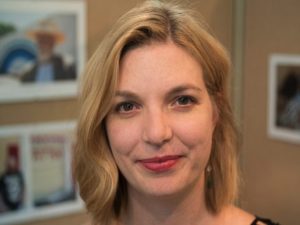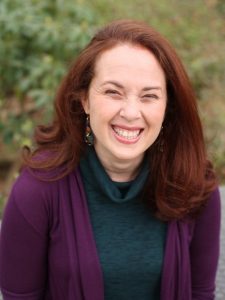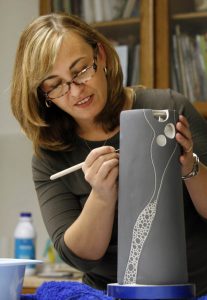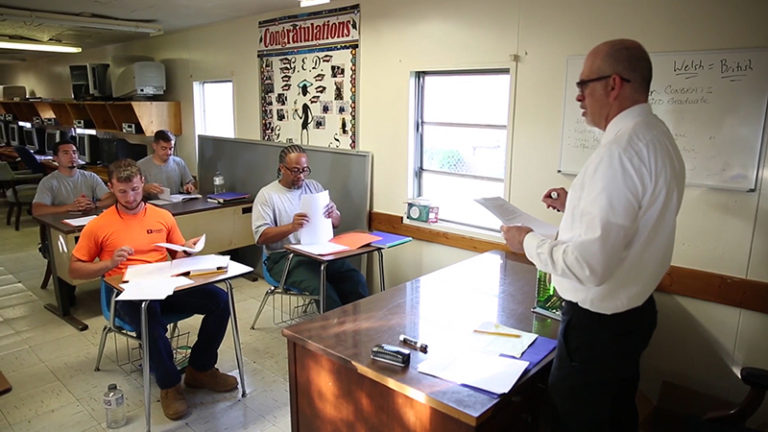Public writing teeters paradoxically in the modern academic imagination. On one hand, in a scramble for relevance and departmental survival, scholars in the humanities are urged to make their ideas legible and digestible to interests outside the narrow circumference of their own field. On the other hand, public writing is frowned on or undervalued by some tenure committees, which may view non-refereed production as an unserious distraction from the “real,” if also insular work of the traditional academic. Though she actively practices both, Dr. Molly Worthen doesn’t think that one of these forms of writing is any more valuable than the other, and pointed out to me in a recent conversation that we risk forgetting what makes both modes differently potent when we romanticize one to the exclusion of the other.
 A contributing opinion writer for the New York Times as well as the author of a slew of respected academic publications focusing on contemporary American religious and intellectual history, Dr. Worthen is an example of a scholar who actively lives in and toggles between both worlds. That said, it should be noted for aspiring public writers that Worthen’s dual citizenship has been long in the making. In college, Worthen became interested in journalism simultaneous to the development of a set of intellectual and existential interests in the history of religion and theology. Raised in a secular, agnostic family, Worthen realized around the same time as she started writing as a columnist for her campus newspaper and interning at metro daily news outlets that “for a lot of human beings over the course of our species history, religion has been this incredibly important framework.” “It was so alien to me in many ways,” she observed, “but also compelling: who doesn’t want a set of answers to the big metaphysical questions?” With this in mind, during the summer following her sophomore year, Worthen used a research grant to spend several weeks in rural Alberta, where she lived alongside an isolated, schismatic community of Russian Orthodox old-believers. This experience was her first exposure to the practice of field work, which has continued to inform both her public and academic writing, as well as to intimately suture these two modes together. The experience was additionally formative in that it was for Worthen her “first experience in the exercise of trying to get as close to inhabiting the perspective of someone who is very different than yourself.” “This took place in the context of religion,” she continued, “but the endeavor to inhabit other perspectives is what I see as being central to the humanities as well as to good journalism. It’s what I find so energizing about doing a great interview with an interesting person who comes at the world differently than I do.”
A contributing opinion writer for the New York Times as well as the author of a slew of respected academic publications focusing on contemporary American religious and intellectual history, Dr. Worthen is an example of a scholar who actively lives in and toggles between both worlds. That said, it should be noted for aspiring public writers that Worthen’s dual citizenship has been long in the making. In college, Worthen became interested in journalism simultaneous to the development of a set of intellectual and existential interests in the history of religion and theology. Raised in a secular, agnostic family, Worthen realized around the same time as she started writing as a columnist for her campus newspaper and interning at metro daily news outlets that “for a lot of human beings over the course of our species history, religion has been this incredibly important framework.” “It was so alien to me in many ways,” she observed, “but also compelling: who doesn’t want a set of answers to the big metaphysical questions?” With this in mind, during the summer following her sophomore year, Worthen used a research grant to spend several weeks in rural Alberta, where she lived alongside an isolated, schismatic community of Russian Orthodox old-believers. This experience was her first exposure to the practice of field work, which has continued to inform both her public and academic writing, as well as to intimately suture these two modes together. The experience was additionally formative in that it was for Worthen her “first experience in the exercise of trying to get as close to inhabiting the perspective of someone who is very different than yourself.” “This took place in the context of religion,” she continued, “but the endeavor to inhabit other perspectives is what I see as being central to the humanities as well as to good journalism. It’s what I find so energizing about doing a great interview with an interesting person who comes at the world differently than I do.”
Given this early yet powerful confluence of her interest in religion with her interest in journalism, I asked Worthen why she felt it was important to write about religion for the public, specifically in a specialist capacity. Here’s how the rest of our conversation unfolded:
MW: “In surveying the writing on religion in the early 2000s, I thought that a lot of it kind of caricatured conservative Christians, and didn’t really take their theology seriously, tending to treat it as pious varnish for base motives of various kinds. I constantly question this, and try to take people’s self-proclaimed ideas very seriously. I thought there was more room for nuance and history. Since 2016, I think every piece I’ve written on religion could be summed up under the same headline: ‘Hey, New York Liberals: There are some evangelicals over here who don’t like Donald Trump and who are more complicated than you think! They’re interesting, and you should get to know them!’
In many ways public writing is the same intellectual exercise as teaching an undergraduate survey course, in that you have to simplify a complex phenomenon in a short space for a general audience, all in a way that hopefully engages them. But I also feel that journalism makes me a better historian, especially a better historian of religion, because I can talk to people who are living members of a community I’ve studied remotely in order to test out some of my ideas and my application of their own in-house vocabulary. In the graduate and undergraduate classes that I teach, I’m also able to draw on field experiences as a journalist. So, when I lecture on Mormons to undergrads, I can talk about my reporting trip to a big Mormon pageant in upstate New York. Or I can talk about gender politics in the Christian right. Or I can talk about some profiles I’ve written about women bible teachers. I think this makes the history come alive for students in a way that it might not otherwise.”
KR: “It strikes me that your field of study, or the themes that you’ve chosen to make your life’s work, lend themselves really well to engaging with a public audience. So, because you’re thinking about the contemporary intersection of American religion and politics, your object of study is immediately accessible to field work; you can go and integrate yourself in a given community, then import your insights into scholarship and public writing. I’m curious if you have any advice for academics or scholars whose work doesn’t engage the contemporary. Do you see the task of public writing as being perhaps more difficult for this group? If not, what are some ways that people in this position can rethink their relationship to the contemporary moment?”
MW: “I should preface my answer to your question by saying that I do worry about some of the extreme attitudes toward public writing in academia. We’ve talked about the fact that there is a lot of suspicion of and disdain for it. But on the other hand I worry about the tendency to lionize it, to treat it as a pinnacle. I hate the thought that somehow people who do public writing have the right to look down upon those who write for the guild or a specialist audience. We’re all in academia because we believe that this space preserves something essential to civilization. And it’s not journalism. It’s work that doesn’t have the immediate cash-value pay-off for the uninformed reader. I think that’s something we lose sight of when we talk about getting better at communicating to a public. Writing for the public, of course, is important; it’s just not the only thing.
I absolutely believe I have an easier time making these kinds of connections. I structured my approach to my studies in order to facilitate it. But I have friends who are scholars of first-century New Testament history, or other fields that are even more remote, who manage to do a fair amount of this kind of public work. I think a lot of it is attitudinal. Whatever you study, you’re drawn to it because it unfolds before you problems and themes that are really central to what’s important in human life. This is as true if you study third-century Persia as if you study the twenty-first century United States. That’s not to say that every area of study produces the same number of brainstorm firecrackers, but I think the key thing is to start cultivating a habit of mind where you begin to think in terms of broad themes, perhaps keeping a list of connections between things you read in the news or encounter in daily life, and the themes you encountered in the eighteenth-century novel you read the other day for your work. I absolutely think that there are opportunities for scholars in any field who want to do this kind of writing. It’s just a matter of getting your mindset right.”
KR: “Some of the discourse surrounding the notion of public writing among academics can feel–to me at least–a little top-down or paternalistic, where the specialist is viewed as distilling or disseminating a wealth of knowledge to the unwashed masses. But I wonder if there’s anything to be said for reversing this model. It sounds like you do it constantly: when you don your on your public writing hat, it sounds like you’re thinking a lot about what you can learn from the public, rather than vice versa.”
MW: “This is why I do reported pieces. I don’t do op-eds where I’m trying to download information. In fact, my editor has described something of the tone you’ve just summarized: the expert on the mountaintop casting a gaze across the landscape really turns him off. It’s hard to pull that off unless you’re an eighty-five year-old McArthur winner or whatever. I’m teaching a course right now called Public Writing for Scholars. One of my goals is to get students to think beyond the conventional op-ed and learn some basic reporting skills so that they can experiment with diverse relationships to their subjects and write using a range of different genres. These types of articles are really more fun to read and write, and provide an expert with more means of transmitting an argument in a way that is more likely to ‘show’ rather than ‘tell’ in a didactic fashion.”
KR: “I noticed this in your most recent piece for the New York Times, “What would Jesus do about Inequality?” I was struck right off the bat by how much it read like reportage.”
MW: “I’m really a magazine writer. I wrote for TIME magazine in grad school. Though I don’t have as much time anymore to do long reporting trips necessary to produce this kind of work, I have an editor in the Sunday Review who is himself a refugee from the magazine form, and he lets me do more magazine-y pieces. Often the feedback I get from his colleagues is, “this is great, this is really interesting, but we need the argument to be stronger– this is the op-ed page!” It took me a long time to get used to revealing what I think or revealing my politics, since you can’t do this kind of writing and conceal your views on things. It still gives me the willies, frankly, and I would rather be doing magazine pieces where I can hide behind the stories and characters a little more.”
Spring semester 2020 marked the rollout of Dr. Worthen’s inaugural Public Writing for Scholars course at UNC. Worthen believes that talking about the process of pitching an article to an editor and getting it into print “elucidates very interesting conversations and questions about why we’re doing this, like ‘What’s the point? What is the state of dialogue in the public square? Is there even such a thing as dialogue anymore? When you write for any publication, whether it’s on the right or the left of the political spectrum in today’s America, are you always preaching to the choir? Are you ever actually stirring the public debate in a productive way? How do we gauge the impact of our scholarship? Is it about the number of readers? Is it about being able to measure quantifiable change in someone’s life?’” These are key questions not just for students of scholarly and public writing, but for lifelong practitioners as well. In some ways, the awkward relationship between academic and public writing helps intensify productive anxieties over questions of accessibility and public dialogue that may not otherwise occupy a writer’s mind. If nothing else, the tense bridge-work negotiated by “public writing” empathetically sensitizes humanists to the shared themes and questions deeply at play in their research, regardless of how remote that work might initially seem to be from the commonplaces of the everyday.
